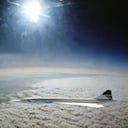Which is considered to be the driest nonpolar place on Earth?
The Atacama Desert is the driest place on Earth, other than the poles. It is a desert plateau in South America covering a 1,600 km (990 mi) strip of land on the Pacific coast, west of the Andes Mountains.
Despite being located next to the Pacific Ocean, Northern Chile's and Southern Peru's Atacama Desert is considered to be the driest nonpolar place on Earth, especially the area around the abandoned Yungay town located in the Antofagasta Region of Chile. The average rainfall is about 15 mm (0.6 in) annually, although some locations receive 1 to 3 mm (0.04 to 0.12 in) a year. Some weather stations there have never received rain. Evidence suggests the desert may not have had any significant rainfall from 1570 to 1971.
The Atacama Desert forms part of the arid Pacific fringe of South America. Dry subsidence created by the South Pacific high-pressure weather cell causes the desert climate. Cold air can't hold as much water vapor as warm air so it dries out any water left in the air. This mix of mountains, winds, and ocean currents combines to make the Atacama incredibly dry.
Surprisingly, around one million people call the Atacama Desert home. Crowding into coastal fishing villages, mining areas and oasis towns. Inhabitants grow dry-weather produce such as olives, tomatoes and cucumbers, and herd alpacas for a living.
More Info:
en.wikipedia.org

